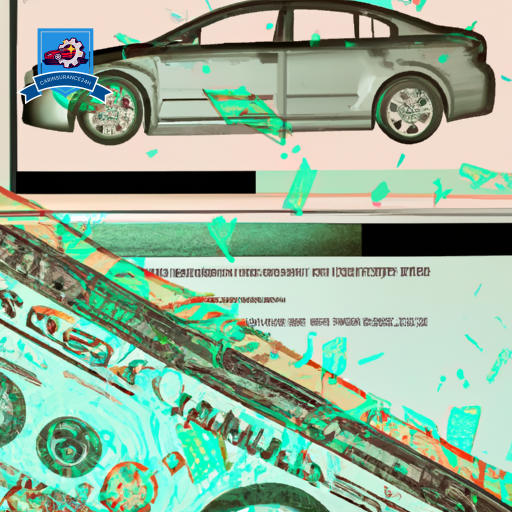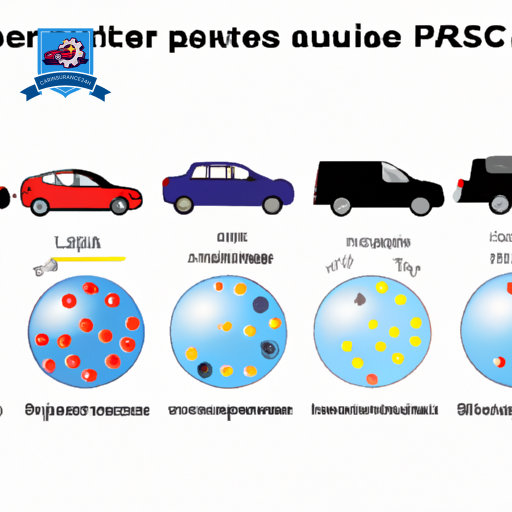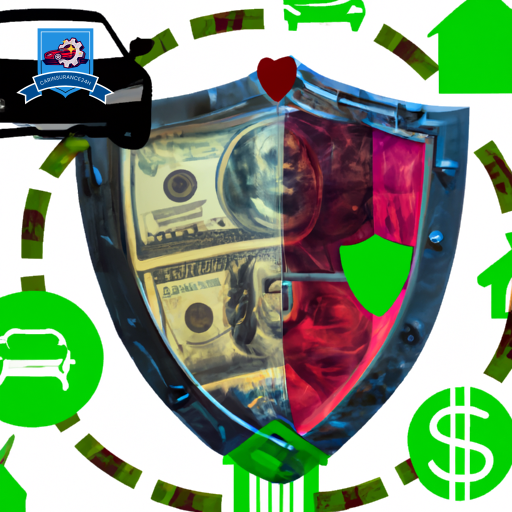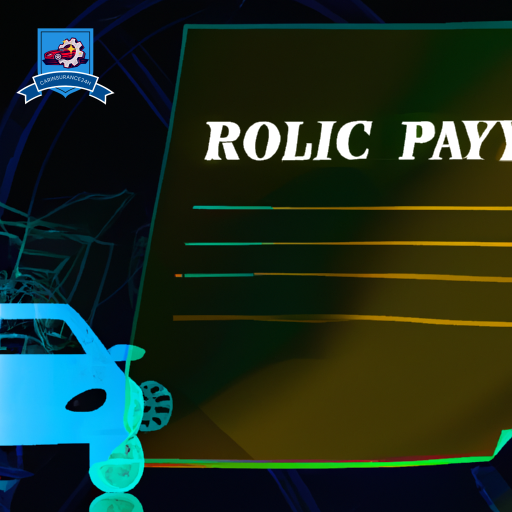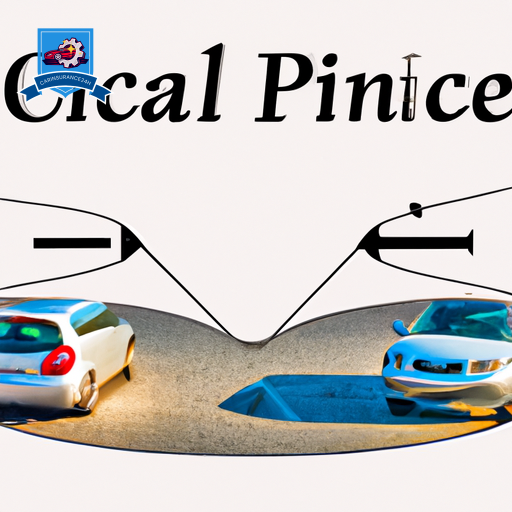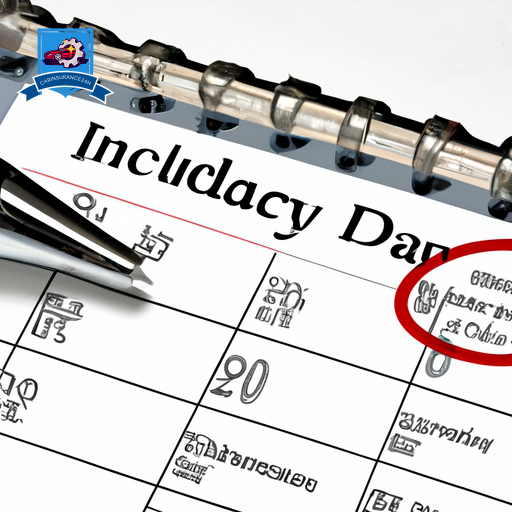In the domain of car insurance, policy limits play a pivotal role in determining the extent to which an insurer covers losses in the event of an accident. These limits, representing the maximum amount an insurance company will pay for a single claim or series of claims within a policy period, are foundational in structuring a policy that aligns with the insured’s needs and financial security.
As we explore the intricacies of policy limits, including the types of coverage limits and how they influence claim processes, a deeper understanding emerges, revealing the critical balance between adequate protection and manageable premiums. This discourse invites further exploration into how adjusting these limits can impact one’s coverage and financial resilience following an unforeseen event.
Understanding Policy Limits

Policy limits in car insurance represent the maximum amount an insurer will pay under a policy for a covered loss. These limits are a critical component of an insurance contract, directly influencing both the protection a policyholder receives and the premiums they pay. Understanding policy limits is essential for policyholders to guarantee they are adequately covered and are not overpaying for their insurance.
Premium considerations play a significant role in determining policy limits. Generally, higher policy limits come with higher premiums, as they increase the insurer’s potential liability. Policyholders must balance the level of coverage they desire with the amount they are willing to pay in premiums. This decision should be informed by a thorough assessment of one’s financial situation and the potential risks one faces.
Geographical factors can also influence the determination of policy limits. Insurers often consider the likelihood and cost of claims in different areas when setting these limits. For example, regions prone to severe weather events or high traffic accidents may see higher policy limits and premiums due to the increased risk of significant losses. Conversely, areas with low incidents of claims may benefit from lower policy limits and premiums.
Types of Coverage Limits

Car insurance policies delineate several types of coverage limits, each designed to address specific areas of financial protection. These limits are critical in defining the extent of compensation offered in various scenarios, ranging from property damage to bodily injury. Understanding these limits is essential for policyholders to guarantee adequate coverage and compliance with state regulations.
Liability coverage limits are paramount, often expressed in a split limit format that separately outlines the maximum payment for individual bodily injury, total injuries per accident, and property damage. This segmentation allows for tailored protection against claims from third parties. State regulations typically mandate minimum liability limits, but drivers are encouraged to take into account higher limits for more detailed protection.
Comprehensive and collision coverages, unlike liability, protect the policyholder’s vehicle. These coverages have limits based on the vehicle’s actual cash value, minus any deductible. Here, the policy limit effectively equals the vehicle’s value, and coverage exclusions may apply, such as wear and tear or mechanical breakdowns.
Uninsured/Underinsured Motorist Coverage (UM/UIM) limits are also influenced by state regulations and provide protection when the at-fault party lacks sufficient insurance. These limits typically mirror the policyholder’s liability limits, ensuring coverage continuity in the event of an accident with an inadequately insured driver.
Personal Injury Protection (PIP) or medical payments coverage limits offer compensation for medical expenses, regardless of fault. These limits vary and can be adjusted to suit individual needs, often with state-mandated minimums.
Each of these coverage types incorporates specific limits and exclusions, tailored to meet the diverse needs of policyholders while adhering to state regulations. Understanding these nuances is vital for selecting appropriate coverage and ensuring financial security.
How Limits Affect Claims

Understanding the various coverage limits within a car insurance policy sets the stage for examining how these limits impact the processing and outcome of claims. These limits, dictated by the policyholder’s choices and the insurer’s offerings, serve as the financial ceiling for claims handling, directly influencing claim outcomes and the overall insurance experience.
-
Claim Rejection: One of the most direct consequences of insufficient coverage limits is the potential for claim rejection. If the costs associated with an accident exceed the policy’s limits, the insurer may only cover expenses up to the set limit, leaving any excess to be handled out-of-pocket by the policyholder. This scenario emphasizes the important balance between selecting adequate coverage limits and managing premium costs.
-
Premium Impact: Post-claim, policyholders might experience an adjustment in their premium rates. This adjustment reflects the insurer’s recalibrated assessment of risk following a claim. Higher coverage limits offer broader financial protection but might lead to higher premiums. Conversely, lower limits may keep premiums low but increase the risk of claim rejection or insufficient coverage.
-
Financial Responsibility: In instances where coverage limits are surpassed, the policyholder must bear the financial burden of the difference. This can lead to significant out-of-pocket expenses, particularly in severe accidents involving multiple parties or extensive property damage.
-
Settlement Negotiations: Coverage limits also play an important role in settlement negotiations. Insurers are constrained by the policy’s limits when negotiating settlements, which can streamline or complicate the resolution process depending on the sufficiency of the coverage in relation to the claim.
Understanding how coverage limits affect claims processing and outcomes is pivotal in handling the complexities of car insurance, emphasizing the balance between adequate protection and manageable premium costs.
Setting Your Policy Limits

Determining the appropriate coverage limits for your automobile insurance requires a careful assessment of personal risk tolerance and financial capacity. This process involves a balanced evaluation of how much risk you are willing to assume versus the amount of premium you are prepared to pay. Premium considerations and risk assessment are vital factors in this decision-making process. It is essential to understand that higher policy limits generally translate to higher premiums. However, they also offer greater protection in the event of a claim.
When setting your policy limits, begin with a thorough risk assessment. This involves evaluating the potential financial impact of an accident on your assets and income. Consider scenarios in which you might be found liable for damages or injuries exceeding basic coverage limits. Reflect on your financial ability to cover such costs out-of-pocket should your insurance limits be insufficient.
Balancing your budget with the need for adequate protection is where premium considerations come into play. Analyze different insurance quotes to determine how varying levels of coverage affect your premium. It is advisable to opt for the highest level of coverage that you can afford without compromising other financial obligations.
Liability Coverage Explained

Liability coverage is an essential component of any auto insurance policy, designed to protect policyholders from financial loss in the event they are found legally responsible for causing bodily injury or property damage to others. This coverage is fundamental in ensuring that individuals can meet their financial responsibilities without depleting personal assets, in the case of an at-fault accident. The role of liability coverage in an insurance policy cannot be overstated, as it directly impacts both the policyholder and the party suffering from the policyholder’s actions.
The importance of liability coverage can be illustrated through the following aspects:
-
Fault Determination: Liability coverage becomes pertinent once a policyholder is deemed at fault in an accident. The process of fault determination is critical, as it directly influences the activation of the liability coverage, ensuring that the injured party receives compensation for their losses.
-
Financial Protection: It serves as a financial shield for the policyholder, covering the costs associated with legal fees, medical bills of the injured party, and repairs for property damage, up to the policy limits.
-
Premium Calculations: The cost of liability coverage is influenced by various factors, including the policyholder’s driving record, the type of vehicle insured, and the chosen policy limits. Premium calculations take these factors into account to determine the price of coverage.
-
Regulatory Compliance: In most jurisdictions, carrying a minimum amount of liability coverage is legally required. This ensures that all drivers have some level of financial protection in place, contributing to public safety and financial security.
Understanding liability coverage and its implications is critical for all drivers, as it forms the backbone of risk management in auto insurance policies.
Collision and Comprehensive Limits

After exploring the significance of liability coverage, it is imperative to discuss collision and complete limits, which provide further financial protection by covering damages to the policyholder’s vehicle. Collision coverage pays for the repair or replacement of the policyholder’s car in the event of an accident with another vehicle or object, regardless of fault. Complete coverage, on the other hand, offers protection against non-collision incidents such as theft, vandalism, or natural disasters. Both types of coverage are essential for complete financial protection but come with their own set of limits and deductibles that greatly affect the overall policy cost and coverage.
The collision and complete limits typically reflect the maximum amount an insurer will pay for a covered claim, minus the deductible. The deductible impact is a critical consideration for policyholders, as it represents the out-of-pocket expense required to activate the coverage. Choosing a higher deductible can lower premium costs but increases the financial burden on the policyholder in the event of a claim. Conversely, a lower deductible raises premium rates but reduces out-of-pocket expenses during a claim.
Premium calculations for these coverages are influenced by several factors, including the vehicle’s value, the policyholder’s driving record, and the chosen deductible amount. Insurers assess the risk of insuring the vehicle and adjust premiums accordingly, balancing the cost of potential claims against the policyholder’s willingness to share in that risk through deductibles. Understanding the interplay between deductibles, coverage limits, and premium calculations is essential for policyholders seeking complete financial protection for their vehicles.
Uninsured Motorist Coverage

Uninsured Motorist Coverage offers essential financial protection for drivers who find themselves in accidents with at-fault parties lacking sufficient insurance. This type of coverage is designed to safeguard individuals not just against uninsured drivers, but often underinsured motorists as well, providing a critical financial buffer in the wake of accidents that are not the policyholder’s fault. Understanding the nuances of Uninsured Motorist Coverage, including how it interacts with state laws and potential coverage exclusions, is vital for policyholders seeking comprehensive protection.
To illustrate the importance of Uninsured Motorist Coverage, consider the following scenarios:
-
A Hit-and-Run Incident: You’re involved in a hit-and-run. The at-fault driver flees the scene, leaving no opportunity to claim against their insurance. Uninsured Motorist Coverage can step in to cover your damages and medical expenses.
-
An Underinsured Driver: You’re in a severe accident where the at-fault driver’s policy limits are insufficient to cover all of your medical bills. This coverage can make up the difference.
-
Legal Costs: In some cases, securing compensation from an uninsured or underinsured driver may require legal action. Certain policies may cover these legal expenses.
-
State Variations: Depending on where you live, state laws may mandate the inclusion of Uninsured Motorist Coverage in your policy, or offer it as an optional addition. Coverage exclusions and limits can vary significantly by state, affecting how much protection you actually have in the event of an accident with an uninsured driver.
Understanding these aspects of Uninsured Motorist Coverage is vital for drivers seeking to navigate the complexities of car insurance and make sure they are adequately protected on the road.
The Role of Deductibles

While Uninsured Motorist Coverage provides a safety net against drivers who lack adequate insurance, understanding the role of deductibles is key to comprehending the full scope of your auto insurance policy. A deductible is the amount you, the policyholder, are responsible for paying out of pocket before your insurer covers the remaining costs of a claim. This financial mechanism is pivotal in the world of auto insurance, affecting both the policyholder’s immediate financial obligations and the long-term premium calculations.
The concept of deductible recovery is integral to the insurance process. In situations where another party is at fault, your insurer may seek to recover the costs paid out, including your deductible. Successful recovery efforts can lead to a reimbursement of your deductible, highlighting the importance of this feature in policy design and claim resolution.
Additionally, the size of your deductible directly influences your insurance premiums. Opting for a higher deductible typically results in lower monthly premiums, as it signifies your willingness to share a greater portion of the risk. Conversely, a lower deductible means higher premiums, but less financial strain in the event of a claim. This balance between deductible amount and premium cost requires careful consideration, impacting both your financial security and your capacity to manage unexpected expenses.
Adjusting Limits Over Time

As life circumstances and asset values change, adjusting the limits of your car insurance coverage becomes an essential part of maintaining adequate protection. The dynamic nature of personal finances and the ever-present inflation impact necessitate regular assessments of your policy’s effectiveness in safeguarding against potential losses. Failure to adapt your policy limits over time can lead to significant financial exposure in the event of an accident or theft.
To elucidate the importance of adjusting your car insurance limits, consider the following:
-
Inflation Impact: Over time, the cost of repairs and replacement parts for vehicles tends to increase due to inflation. This can render your current coverage limits insufficient, leaving you with out-of-pocket expenses after an accident.
-
Life Changes: Major life events such as buying a home, getting married, or having children can significantly alter your financial landscape and risk profile. Updating your policy limits to reflect these changes is crucial for ensuring comprehensive coverage.
-
Asset Accumulation: As you accumulate more assets, your liability risk increases. This necessitates higher coverage limits to protect your assets from potential claims in the event you are found at fault in an accident.
-
Market Value Fluctuations: The market value of your car can change due to depreciation or improvements. Regularly adjusting your coverage limits to reflect the current value of your vehicle ensures that you are neither overpaying for insurance nor underinsured.
Frequently Asked Questions
How Do Policy Limits Interact With Legal Requirements in Different States or Countries?
Exploring the labyrinth of state variations and international regulations reveals the complex interaction between policy limits and legal mandates. Each jurisdiction prescribes minimum thresholds, influencing insurance practices and compliance across diverse legal landscapes.
Can Policy Limits Affect My Ability to Sue or Be Sued in the Event of an Accident?
Policy limits can greatly impact settlement negotiation and fault determination processes in litigation following an accident. They may limit or extend one’s ability to pursue or defend against legal action, influencing the lawsuit’s outcome.
How Do Policy Limits From Different Insurers Compare When Involved in a Multi-Car Accident?
In a multi-car accident, coverage comparison and insurer responsibility vary greatly. Each insurer’s policy limits dictate their liability extent, necessitating a thorough comparison to understand potential financial coverage and legal responsibilities for all parties involved.
How Might Changes in My Personal Financial Situation Warrant a Review or Adjustment of My Policy Limits?
Changes in one’s personal financial situation, such as adjustments to investment strategy or retirement planning, may necessitate a review and potential adjustment of insurance policy limits to guarantee adequate coverage and financial protection.
Are There Any Tax Implications Associated With Setting High Policy Limits on Car Insurance?
Setting high policy limits on car insurance does not typically provide tax deductions or align with investment strategies, given that personal car insurance premiums are generally not tax-deductible for individuals under current tax laws.

